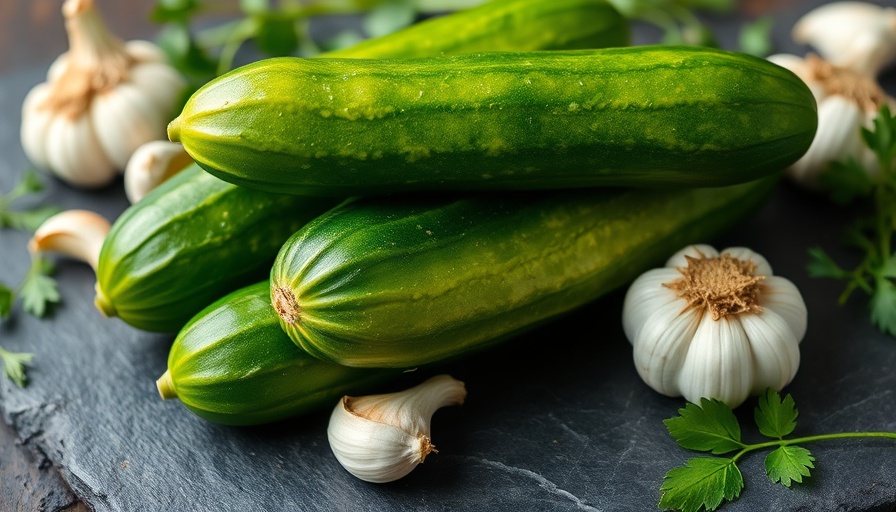
Transforming Meals: The Magic of Growing Your Own Food
In the age of convenience where grocery stores dominate our meal choices, the art of cultivating an edible garden invites a delicious revival. Imagine stepping outside your door, plucking fresh produce, and transforming it into flavorful meals that burst with vibrancy. Edible gardening not only offers a unique taste that outshines store-bought goods but also has the power to enhance every dining experience.
The Irresistible Joy of Fresh Cucumbers
Cucumbers are the unsung heroes of the edible garden. Picture this: you're basking in the summer sun when you grab a crisp cucumber straight from your garden. Its refreshing flavor and high water content quench your thirst while its crunchy texture adds satisfying contrast to any dish. From salads to snacks, cucumbers effortlessly elevate meals with their versatility.
Whether sliced into salads or tossed into a yogurt dip, the coolness of fresh cucumbers lightens every plate. The satisfaction of harvesting them before a summer gathering ensures they aren't merely ingredients — they're a flavorful extension of your green thumb.
Zucchini: A Garden Overachiever
No garden is complete without zucchini, the prolific summer squash that keeps on giving. One plant can churn out an abundance of zucchini, creating opportunities for culinary creativity. Whether spiralized into zoodles or stuffed with savory fillings, zucchini encourages you to experiment and innovate in the kitchen.
It's more than just an ingredient; zucchini cultivates family memories as you share meals around the dinner table, packed with seasonal freshness. Plus, it makes it easy to sneak more vegetables into your family’s diet, challenging you to think out of the box with each bountiful harvest.
Harvesting the Bounty: Herbs and Greens
While cucumbers and zucchinis are star performers in the garden, herbs and leafy greens deserve recognition for bringing depth and flavor to your meals. Fresh basil, mint, or cilantro can turn a simple dish into a gourmet delight, while lettuce and arugula add a peppery twist.
Imagine tossing a vibrant salad that contains herbs you’ve just snipped outside your door. The fragrant aroma elevates not just the meal, but also your connection to what you eat, making the garden-to-table experience truly enriching.
Nutrition and Sustainability: The Bigger Picture
Growing your own food also resonates with sustainable living practices. Cultivating an edible garden contributes to a healthier lifestyle — both for you and the environment. You not only minimize packaging waste, but you also reduce the carbon footprint associated with transporting food long distances. By choosing to grow, you embrace a lifestyle that's vibrant and sustainable.
This practice empowers you to understand the origins of your food, fostering a deeper appreciation for each bite. As you nurture the plants, you develop patience and mindfulness that enhance your overall experience with food.
Embracing the Garden Lifestyle
Starting an edible garden might feel daunting at first, but with the right knowledge and resources, it can be a fulfilling journey. You can learn from community gardening groups, tutorials, and fellow gardeners who share wisdom on what works best. The community aspect of gardening is significant; it creates an opportunity for social interaction, sharing tips, and even swapping produce.
As you gather friends and family to join in the fun of gardening, you cultivate relationships just as you cultivate food. The memories formed while planting, watering, and harvesting become invaluable parts of your family's story.
Actionable Insights for Aspiring Gardeners
Thinking about starting your own edible garden? Here are a few actionable insights to get you started:
- Begin with beginner-friendly plants: cucumbers and zucchini are easy to grow and provide quick satisfaction.
- Research companion planting to maximize space and productivity; certain plants thrive better together.
- Embrace the joy of experimentation; discover recipes that challenge your culinary creativity.
The journey to cultivating an edible garden is as rewarding as the harvest itself. By embracing the process, you not only nourish your body but also your mind and spirit, creating a holistic experience that enhances your relationship with food.
If the idea of cultivating your own edible garden excites you, take the first step today! Seek out community resources, gather supplies, and dive into the rewarding experience of growing food that will make every meal extraordinary.
 Add Row
Add Row  Add
Add 




Write A Comment